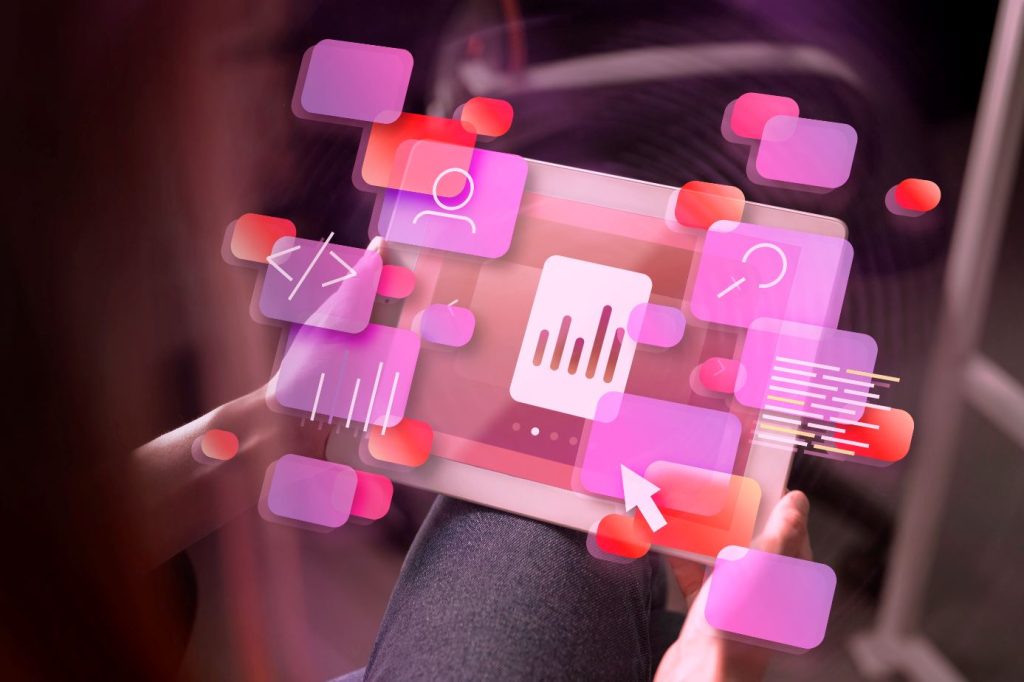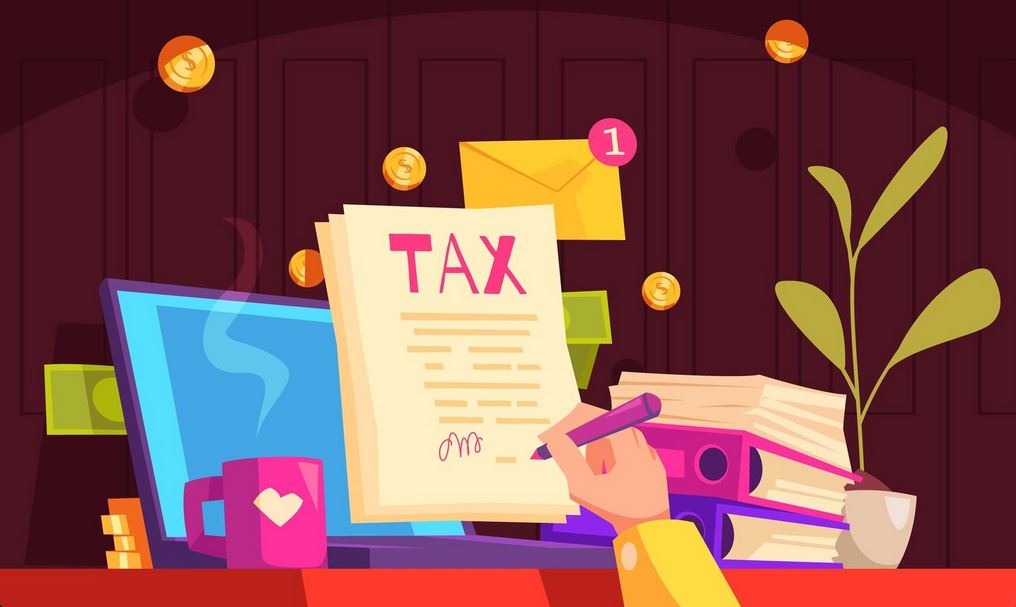The Future of HR and Payroll Systems: Adapting to Technological Advancements

Introduction
In today’s digital age, managing human resources and payroll can no longer rely on bulky file cabinets and scattered spreadsheets. Thanks to advancements in HR tech and payroll technology, businesses are experiencing a digital transformation that makes these processes faster, more accurate, and incredibly efficient. With the rise of Human Resource Information Systems (HRIS), tools like OnPay, BambooHR, Patriot Software, and Rippling are leading the charge—ensuring that employee management is not just efficient but also streamlined and stress-free.
Evolution of HR and Payroll Systems

Historical Overview
Back in the day, HR and payroll tasks were largely manual processes. Picture a world where HR professionals were buried under piles of paperwork, armed with only a calculator, a pen, and sheer determination to process payroll or track employee performance. Employee records were maintained in filing cabinets, and payroll calculations were a math marathon, subject to human error. Looking back, it’s incredible how the industry managed with the tools at its disposal. However, as businesses expanded and the workforce grew, the limitations of manual processes became more evident.
This old-school approach not only slowed down operations but also made it difficult to ensure accuracy. Payroll errors were common, and spotting trends in employee performance or labor costs was tricky at best. As companies began to feel the pressure to increase efficiency, it was clear that changes were necessary. Enter: the digital revolution.
Transition to Digital Solutions
The transition from manual to digital systems in HR and payroll was akin to swapping an abacus for a calculator. Slowly but surely, organizations started adopting early digital solutions that promised increased accuracy and efficiency. Initial software applications were basic, offering fundamental payroll calculations and record-keeping that were still largely disconnected from other business processes.
As technology evolved, so did these systems, integrating new features that automated calculations and provided secure digital storage. OnPay, BambooHR, Patriot Software, and Rippling emerged as forerunners in the field, slashing time spent on routine tasks and reducing errors significantly. The ability to maintain comprehensive digital records meant that HR personnel could say goodbye to file cabinets and hello to sleek, searchable databases.
Key Drivers of Technological Adoption
Several key reasons prompted the shift to technological solutions in HR and payroll systems:
– Efficiency and Accuracy: The need for speedy and precise processing is a given, especially when dealing with something as touchy as payroll. Technology minimizes errors, ensuring employees are paid correctly and on time.
– Cost Reduction: Less time spent on manual processing translates to reduced labor costs and more resources that can be directed toward strategy and innovation.
– Compliance and Reporting: Navigating the labyrinth of payroll and labor laws can be overwhelming, but digital solutions streamline compliance by automating reporting processes.
– Employee Experience: Modern employees expect seamless interactions—whether it’s applying for leave or accessing pay stubs. Digital systems enhance the user experience, contributing to higher employee satisfaction and retention.
– Data Security: In an era where data breaches are lurking around every corner, the demand for secure systems that protect sensitive employee data is high. Technology answers the call with robust security measures.
Key Features of Modern HR and Payroll Systems
Cloud-Based Solutions
One of the most transformative features in today’s HR and payroll systems is the rise of cloud-based solutions. Unlike the clunky, on-premise systems of yore, cloud-based systems like BambooHR and Rippling offer unprecedented accessibility and flexibility. HR teams and employees can access these systems from anywhere, anytime, which makes remote work seamless and disaster recovery a breeze.
But the benefits extend beyond convenience. Cloud-based systems are often more cost-effective, eliminating the need for heavy infrastructure and ongoing maintenance. Plus, they offer scalability, allowing businesses to adjust their subscription plans as they grow. Updates and enhancements are rolled out regularly, ensuring that the system remains cutting-edge without the business skipping a beat.
Integration of AI and Automation
AI and automation are like the rocket fuel of modern HR and payroll systems. Automation takes over repetitive tasks such as data entry, allowing HR professionals to focus on strategic activities that require a human touch. Imagine a world where payroll runs itself, leave requests are processed without HR’s intervention, and performance appraisals are dynamically updated with minimal oversight.
Meanwhile, AI offers intelligent insights, predicting trends like turnover or selecting the best candidates during recruitment. It’s like having a wise mentor who sees what others might miss. AI in systems like those from Patriot Software enhances everything from recruitment to employee engagement by offering predictive insights and personalized communication.
Data Analytics for Enhanced Decision-Making
Modern HR and payroll systems are treasure troves of data. The key is harnessing this data to drive decisions. With advanced analytics tools, HR departments can analyze workforce trends, monitor engagement levels, and optimize labor costs in real-time.
Comprehensive dashboards and reports illuminate patterns and forecasts that enable strategic planning. For instance, if the data indicates a high turnover in a particular department, HR can dive deeper to uncover root causes and implement solutions. Analytics also facilitates better workforce planning, ensuring that staffing levels align with business demand.
In essence, data-driven decision-making transforms HR from a support function into a strategic partner, capable of steering organizational success.
Embracing technology in HR and payroll isn’t just about keeping up with trends—it’s about harnessing the power to work smarter, not harder. As these systems continue to evolve, they promise even more innovations that will redefine the employee-employer relationship. Whether you’re a startup or an industry giant, leveraging modern HR tech can lead to a happier workforce and a more efficient organization.
Benefits of Implementing Advanced HR and Payroll Systems
In today’s digital age, the landscape of human resources (HR) and payroll has evolved dramatically. The shift from paper-based systems to advanced digital platforms has not only streamlined processes but also enhanced overall functionality. Let’s dive into the key benefits these hi-tech solutions bring to the table.
Improved Efficiency and Accuracy
When was the last time you got lost in a sea of spreadsheets? Advanced HR and payroll systems wave goodbye to that chaos. By digitizing records and automating repetitive tasks, these systems significantly enhance efficiency. Everything from employee onboarding to payroll processing becomes a breeze, freeing up valuable time for HR professionals to focus on strategic tasks.
Accuracy is another huge win. Payroll errors can lead to unhappy employees and potential legal headaches. With advanced systems, calculations are automated, reducing the likelihood of costly mistakes. These tools ensure compliance with the latest regulations by automatically updating tax codes and labor laws. Talk about peace of mind!
Enhanced Employee Management
Managing a team involves more than just tracking hours and processing paychecks. Advanced HR systems come equipped with features for performance evaluations, learning and development, and employee engagement. You can finally wave goodbye to the clunky old filing cabinets filled with performance reviews and training materials!
These platforms often include employee self-service portals—allowing team members to access their information, request time off, and even provide feedback at the click of a button. This boosts transparency and empowers employees to take charge of their own data. Suddenly, HR isn’t just a department, but a partner in your business’s growth journey.
Cost Savings and ROI
Let’s face it—time is money. By automating routine HR and payroll tasks, businesses can reduce the number of hours spent on administrative duties, translating to significant cost savings. Some systems even offer predictive analytics, helping you forecast staffing needs and manage budgets more efficiently.
Moreover, investing in a robust HR and payroll system can deliver a solid return on investment (ROI). By reducing errors, improving compliance, and enhancing employee satisfaction, you’re not just saving cash—you’re growing your bottom line. Plus, who doesn’t love getting rid of those pesky fines from payroll mishaps?
Popular HR and Payroll Software Options

The market is brimming with innovative HR and payroll software options, each offering unique features to meet the diverse needs of businesses. From start-ups to established enterprises, there’s something for everyone. Let’s take a closer look at some of the standout options.
OnPay
OnPay is like the Swiss Army knife of payroll systems. Known for its simplicity and comprehensive features, it’s a favorite among small to mid-sized businesses. OnPay offers unlimited payroll runs, direct deposit, and automated tax filings—all with no hidden fees. It’s designed to handle everything from employee onboarding to compliance, making it a one-stop-shop for HR managers.
Additionally, OnPay integrates seamlessly with other platforms like QuickBooks and Xero, allowing for smooth data flow and financial tracking. The software is cloud-based, so you can access all your payroll data anywhere, anytime. That’s a win for both flexibility and convenience.
BambooHR
If you’re looking for a more holistic HR solution, BambooHR might just be your jam. Beyond payroll, BambooHR delivers features that cover the entire employee lifecycle—from hiring and onboarding to performance management and culture building.
BambooHR helps HR pros get back to what truly matters: people. Its user-friendly interface makes collecting and analyzing HR data a walk in the park. The software offers custom workflows, detailed reporting, and an intuitive mobile app, ensuring you’re always in the loop, whether at your desk or on the go.
Rippling
Rippling takes an all-in-one approach to HR and IT management. By combining payroll, benefits, and human resources, it streamlines operations. What sets Rippling apart is its ability to incorporate IT management into the mix, seamlessly linking employee devices and apps for onboarding or offboarding.
Rippling shines with its powerful automation capabilities. You can easily manage employee locations, optimize IT workflows, and ensure everyone gets paid on time. Its modular nature means you only pay for the features you need, making it a versatile choice for varying business sizes and needs.
The benefits of these systems are clear—they enhance efficiency, protect against errors, and enable businesses to manage teams with ease. Plus, whether you’re a boutique firm or a big box brand, there’s a solution out there tailored to meet your specific needs. As technology continues to advance, HR and payroll systems will only grow more sophisticated, offering even more ways to help businesses thrive in a competitive landscape.
Case Studies: Successful Implementations
The world of HR and payroll systems is as diverse as the businesses that implement them. No one-size-fits-all solution exists because each organization has unique needs. Let’s dive into some success stories that illustrate how diverse entities have successfully integrated technology into their HR and payroll processes.
Large Enterprises
For large enterprises, adopting new HR systems is like turning a massive ship. It requires strategic planning and seamless execution. One notable example is a global manufacturing firm that integrated Rippling for its HR and payroll needs. Before choosing Rippling, the company struggled with managing employee data across various international locations.
By onboarding Rippling, the enterprise benefited from:
– Centralized Data Management: Unified employee data tracking was achieved across all offices worldwide, which significantly boosted efficiency.
– Automated Payroll Processing: Payroll errors dropped by a whopping 40% due to automation, reducing compliance risks significantly.
– Scalability: The cloud-based nature of Rippling allowed the company to quickly adjust and scale processes without the need for extensive hardware upgrades or additional staffing.
These changes not only lightened the HR department’s load but also led to increased satisfaction among employees who valued the newfound transparency and reliability.
Small to Medium Businesses
Small and medium businesses (SMBs) often wear multiple hats, making efficient and straightforward systems crucial. Enter OnPay, a favored choice among SMBs because of its balance between functionality and ease of use.
A growing design firm with 50 employees switched from a manual system to OnPay and saw almost immediate benefits:
– Time-Saving Automation: Payroll processing time was cut in half, allowing HR personnel to focus on talent development and company culture.
– Integration Capabilities: The firm’s existing accounting software seamlessly synced with OnPay, enabling smoother financial oversight and reporting.
– Cost-Effectiveness: Compared to their previous setup, OnPay reduced operational costs by 25%, which was a significant win for their budget-conscious management.
This transition transformed payroll from a dreaded task into an efficient part of their business operations.
Non-Profit Organizations
Non-profits often operate with limited resources and must be extra judicious with their technology investments. BambooHR became a game-changer for a mid-sized non-profit focused on community outreach.
Why BambooHR was the perfect match:
– Comprehensive Employee Records: Managing volunteers and staff became streamlined, with a comprehensive dashboard to track hours, projects, and performance.
– User-Friendly Interface: Without a dedicated IT team, the non-profit leaned on BambooHR for its intuitive, easy-to-navigate design, ensuring volunteers could quickly access and update information as necessary.
– Improved Reporting and Analytics: The organization could generate reports with ease, allowing it to present data-driven insights to current and prospective donors.
By investing in BambooHR, the non-profit was able to optimize its human resource management, leaving more room for focusing on what truly mattered: their mission.
Challenges and Considerations in Adopting New Systems
While the success stories are inspiring, deploying new HR and payroll systems is not without its challenges. Adopting such systems involves careful consideration of various factors that could impact their effectiveness and acceptance within an organization.
Data Security and Privacy
Undoubtedly, the integration of HR and payroll technology raises concerns about data security and privacy. This is especially critical as these systems handle sensitive information such as social security numbers, bank details, and personal addresses. Organizations must prioritize:
– Encryption Standards: Ensuring that software solutions adhere to the latest encryption protocols to safeguard data.
– Robust Access Controls: Implementing strict access controls so that only authorized personnel can view or modify sensitive information.
– Regular Audits: Conducting frequent security audits helps uncover potential vulnerabilities before they can be exploited by cybercriminals.
Failure to address these concerns could lead to data breaches, causing financial losses and damage to the company’s reputation.
Staff Training and Adaptation
New systems can only be as effective as the people using them. Hence, one key challenge is ensuring employees are properly trained and ready to adapt to new technologies. Organizations can facilitate this transition by:
– Comprehensive Training Programs: Offering robust training sessions that cater to various learning styles, including hands-on workshops, webinars, and video tutorials.
– Ongoing Support and Resources: Providing continuous support in the form of dedicated help desks or online resource libraries can help address questions and concerns as they arise.
– Feedback Loops: Encouraging and implementing employee feedback to continually refine the system’s usability, ensuring it meets the user’s needs.
Training is an investment, but the payoff is a workforce that’s competent and confident in utilizing the new systems.
System Integration with Existing Tools
The beauty of tech solutions lies in their potential to integrate with existing tools, but this isn’t always straightforward. Missteps during integration can lead to data being siloed, redundancy, or even loss. Organizations should consider:
– Compatibility Testing: Before full-scale implementation, conducting compatibility tests to see how new systems interact with existing tools such as ERP or CRM systems.
– Customization: Sometimes custom tweaks are necessary to ensure seamless compatibility, which may involve working closely with vendors for bespoke solutions.
– Phased Rollouts: Gradually rolling out new systems can help identify and address integration issues in smaller, manageable components.
Getting integration right can significantly enhance organizational efficiency and add value to existing processes.
Implementing new HR and payroll systems is undoubtedly transformative but must be approached with caution and strategic foresight. By learning from successful implementations and anticipating potential obstacles, organizations can maximize the benefits of HR technology and drive forward their digital transformation journeys with success.
The Future of HR and Payroll Technology

Let’s not beat around the bush—technology is completely turning the world of HR and payroll on its head. The good old days of juggling spreadsheets and locked filing cabinets are transforming into digital landscapes where efficiency reigns supreme. As organizations grow, so does the need for streamlined processes that can keep pace. Welcome to the future of HR and payroll revolution, where tech takes center stage.
Emerging Trends
First up, let’s talk about automation. More companies are catching on to the benefits of automating their processes. Whether it’s managing benefits, processing leave requests, or calculating payroll, automation lightens the load on HR professionals, leaving them more time to focus on strategic tasks. An automated payroll system ensures everyone is paid correctly and on time, reducing room for error.
Then there’s Artificial Intelligence (AI). Imagine having AI-driven chatbots assist employees with everything from resetting passwords to checking leave balances. These smart assistants are helping HR staff by handling repetitive queries, which used to chew up an annoying amount of time.
Cloud-Based Systems
Next, don’t overlook cloud-based solutions. These are increasingly popular due to their flexibility, accessibility, and scalability. With cloud-based HR and payroll systems, all employee data is stored securely in one central location that managers and employees can access anywhere and anytime. It’s like your entire filing cabinet digitized and available at your fingertips!
Data Security and Compliance
As tech advances, so too does the focus on data security and compliance. Modern systems are equipped with encryption and cybersecurity measures to guard sensitive employee information. Plus, they help ensure compliance with ever-changing labor laws, reducing the risk of non-compliance penalties.
Integration with Other Platforms
A seamless integration is a gift that keeps on giving. HR tech now can sync with other platforms like accounting systems, time-tracking apps, and talent management solutions, enabling a smoother flow of information and minimizing data entry. Think of it as creating a harmonious tech orchestra, making sure every section plays the right note.
Collaborations with Tech Providers
Finally, let’s acknowledge the role of strategic partnerships with tech providers. Systems like OnPay, BambooHR, Patriot Software, and Rippling are enabling businesses to craft custom solutions that fit their unique needs. Companies are no longer locked into a one-size-fits-all approach; they can tailor-made solutions for optimal performance.
In this rapidly evolving landscape, the future is clear: HR and payroll technology is not just a fleeting trend — it’s here to stay, streamlining operations, enhancing employee experience, and ultimately, bringing a smile to everyone’s face (including HR’s). Now that’s a vision for the future worth investing in!
Conclusion
When it comes to HR and payroll systems, technology isn’t just a luxury anymore—it’s a necessity. As we’ve seen, utilizing systems like OnPay, BambooHR, Patriot Software, and Rippling can transform your organization’s operations. From streamlining employee management to ensuring payroll accuracy, these platforms do more than just keep track of data. They make your day-to-day tasks easier and more efficient, enabling your team to focus on what really matters: your people. Embracing digital transformation in HR and payroll means stepping into a future where accuracy meets efficiency, helping build stronger, more engaged workplaces.
You might also be interested in Online Payroll Systems , The Future of Global Payroll Systems: Trends to Watch



